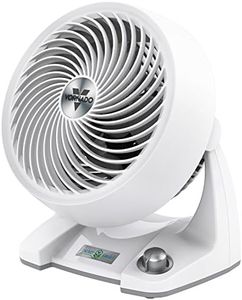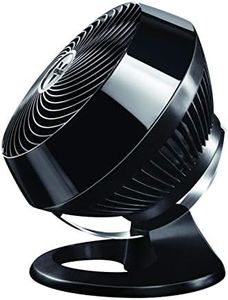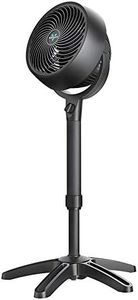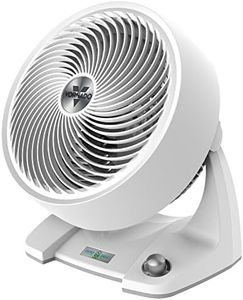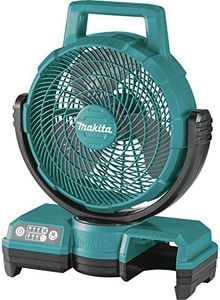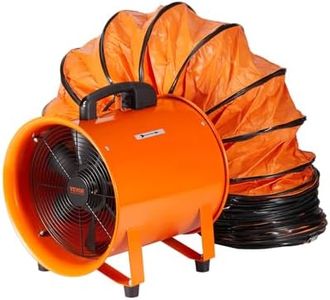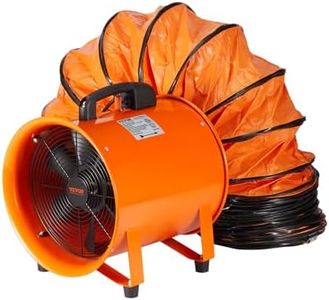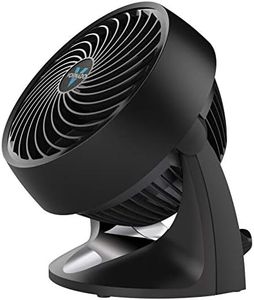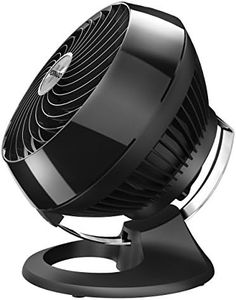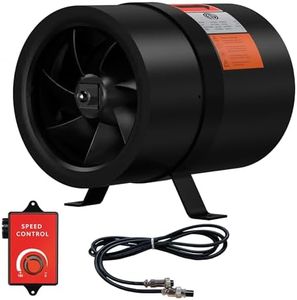We Use CookiesWe use cookies to enhance the security, performance,
functionality and for analytical and promotional activities. By continuing to browse this site you
are agreeing to our privacy policy
10 Best Industrial Fans
From leading brands and best sellers available on the web.Buying Guide for the Best Industrial Fans
When choosing an industrial fan, it’s important to focus on how the fan will be used in your specific environment. Industrial fans come in a range of sizes and types, designed to handle everything from cooling large spaces to ventilating areas with dust, fumes, or moisture. Before you buy, consider where you will be using the fan, what you want it to achieve (cooling, air circulation, fume extraction, or drying), and how much space you have. Matching your needs with the right specifications will help you select a fan that is efficient, safe, and effective for your workplace or facility.Airflow (CFM)Airflow, usually measured in Cubic Feet per Minute (CFM), tells you how much air the fan can move in a minute. This is important as it directly affects how well the fan can ventilate or cool a space. Fans with lower airflow (under 5,000 CFM) are suited for smaller spaces or gentle ventilation, while medium airflow (5,000–10,000 CFM) suits mid-sized work areas. Higher airflow levels (over 10,000 CFM) work best for large warehouses or factories. To pick the right one, think about the size of your space and how much air you need moved to achieve comfort or safety.
Fan TypeIndustrial fans can be axial or centrifugal. Axial fans push air straight through, making them ideal for general ventilation or cooling in open areas. Centrifugal fans pull air in and push it at an angle, creating higher pressure for moving air through ducts or filters. Choose axial fans for large, open spaces where you just need air movement, and centrifugal fans for more targeted air movement, such as extracting fumes or dust through ducts.
Size (Diameter)The diameter of the fan's blades affects both the amount of air it can move and the area it can cover. Small fans (under 18 inches) are meant for spot cooling or personal workstations. Medium fans (18–36 inches) are common in enclosed rooms or workshops, and large fans (over 36 inches) are aimed at ventilating big open spaces. Consider the size of your area and the coverage you require—bigger fans are usually better for large-area coverage, but may not be suitable if space is limited.
Mounting StyleIndustrial fans can be mounted on the floor, wall, ceiling, or even ducts. The mounting style is important for safety, space efficiency, and effectiveness. Floor fans are portable and easy to move for spot cooling. Wall and ceiling fans save floor space and offer broad coverage, ideal for permanent installations. Duct fans are integrated into ventilation systems. Your choice depends on where you need airflow and how permanent or flexible you need the installation to be.
Motor Type and PowerThe type and power of the motor determine how strong and reliable the fan is. Single-phase motors are common in small to medium fans, suitable for light industrial use. Three-phase motors provide more power and efficiency for bigger, heavy-duty fans. The wattage or horsepower shows how much energy the fan draws and how powerful it is. Match the fan’s power to your ventilation or cooling needs: larger areas or tasks like fume extraction usually need a more powerful motor.
Noise LevelNoise level, usually measured in decibels (dB), indicates how loud the fan will be during operation. Lower noise is important for environments where people need to communicate or concentrate, while louder fans may be acceptable in noisy factories or warehouses. Fans under 70 dB are generally quiet; 70–80 dB is moderate, and above 80 dB is loud. Decide how much noise is acceptable in your space to pick a suitable fan.
Durability and MaterialsIndustrial fans are often exposed to challenging conditions, so their build quality matters. Fans made from steel or heavy-duty aluminum generally last longer and resist damage from knocks or moisture. Plastic fans are lighter but less durable. For harsh or demanding environments, choose a fan with a solid build and good resistance to the elements, especially if it's exposed to moisture, dust, or chemicals.
